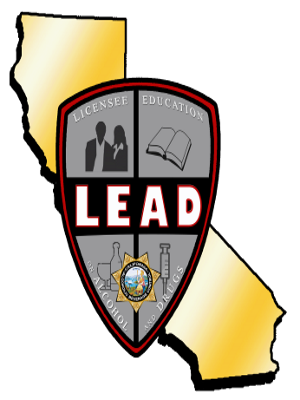Comments on Delivery Minor Decoy Requirements
Comments received during the week of September 21 to September 27, 2020.
Comment #3
From Matt Sutton, California Restaurant Association
The California Restaurant Association (CRA) is the definitive voice of the statewide food service community representing over 22,000 food service establishments. The restaurant community has been dramatically impacted by the COVID-19 pandemic. Restaurant dining rooms were closed to address the public health threat and our operations have been limited to take out, delivery and outdoor dining where allowed.
As California continues to largely be on lockdown for restaurant operations under the state’s Blueprint for a Safer Economy tiered system, a few counties have been able to reopen their indoor dining rooms. The vast majority of the state’s restaurants however only have the limited economic lifeline of take-out and delivery. The CRA appreciates ABC’s recognition of the impact to restaurant operations thru the allowance of sales of to-go alcoholic beverages in the first Notice of Regulatory Relief.
We are exceptionally diligent in our compliance with all requirements for the safe sale and service of alcohol on site and we recognize the need to establish a rigorous regulatory framework for enforcing safe alcohol sales when it comes to delivery and take-out orders.
However, there is a difference in the mechanics of restaurant-based delivery orders and third-party delivery app based delivery orders.
The restaurant has complete control over the order and delivery process in a scenario where the customer places an order for food and alcoholic beverages directly with the restaurant over the phone or on the restaurant’s website, then a restaurant employee delivers the order to the customer at which point the employee will follow the normal alcohol sales protocol by asking for the customer for a valid form of identification.
In a third-party delivery app based scenario, the customer places an order and makes payment on the third-party app or platform. The order is transmitted electronically to the restaurant which prepares the order and waits for the third-party delivery driver to come pick up the order on behalf of the customer. The third-party delivery driver then delivers the order to the customer. At no point in the process does the restaurant interact directly with the customer, a longstanding frustration from both the restaurant and customer point of view. The restaurant has no control over the third-party delivery app driver since the driver is not an employee of the restaurant. Many third-party delivery apps have delivery policies regarding the delivery of alcohol, which require the account owner to be present, have a valid identification and be over 21; but because the driver is not a restaurant employee the restaurant has no way of knowing if these policies are actually followed at the time of delivery.
The CRA strongly objects to any proposed permanent regulation that creates an inappropriate linkage between the restaurant license holder and an independent, third-party delivery app platform. It is impossible for a restaurant to ensure the employees of a third-party app platform follow alcohol service protocols- or even those of their own third-party delivery app.
A third-party delivery app should be held liable for selling and delivering alcohol to minors, not the restaurant licensee.
The CRA would like to offer these specific comments regarding the proposed permanent Delivery Minor Decoy Requirements regulation:
141.1 (c) Agent
The CRA objects to the current definition of “agent” in the proposed permanent regulation.
Third-party delivery app drivers are either independent contractors (free from control of licensee) or they are employees of the platforms.
Third-party app delivery drivers are not employees of the restaurant licensee and are not under their direct control. The restaurant licensee will have no way of knowing if a third-party delivery driver properly asks for valid identification from the customer at the time of delivery. In acknowledging this independence between restaurants and third-party platforms, the legislature passed and the Governor signed AB 3336 (Carrillo), which clearly identifies the third-party platforms’ responsibility as it relates to safely transporting the food from restaurants.
The definition of agent should not be used to place responsibility for the failure of a third-party app delivery driver to ask for a valid identification from a customer at the time of delivery upon the licensee.
141.1 ( e)(4) Minimum Standards
In a third-party delivery app based order scenario, this section is problematic when coupled with the proposed definition of “agent”. As previously stated, the restaurant is relying upon the third-party delivery app to properly assess the age of the customer placing the order and ensure that customer is 21 years or older for the purchase of alcohol. When the restaurant receives the order from the third-party delivery app, the restaurant has no way of knowing the age of the customer, since the delivery driver who picks up the order is not the customer.
CRA recommends the proposed regulation be revised to require third-party delivery apps and their drivers be held liable for the sale and delivery of alcohol to minors. Third- party delivery drivers should be required to follow ABC regulations in the same manner as restaurant licensees and restaurant employees.
Thank you,
Matt Sutton
Senior Vice President of Government Affairs + Public Policy
California Restaurant Association
ABC Response
Comments will be addressed at the end of the comment period.
The referenced attachment is not available here as it was not provided in a format that meets the WCAG 2.0 AA guidelines for accessibility. Please email RPU@abc.ca.gov to request the attachment as a PDF document. You may visit our Accessibility page for more information.



